Tell us about your background, where and when did you study photography, who were your teachers, who influenced you the most?
Daniel Coburn (DC): In 1998, I completed an Associate’s Degree in Graphic Arts and Technology from Washburn University in Topeka, Kansas. I was employed as a graphic designer and illustrator at a major publishing company for ten years before i discovered the full creative potential of photography. I completed my BFA with an emphasis in Photography in 2010 where I studied under MaryDorsey Wanless. Under her guidance, I initiated my critique of photography as an agent of truth and experimented with an interdisciplinary approach to photography, printmaking, drawing, and performance art.
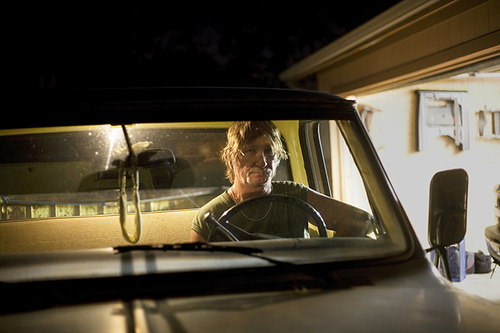
© Daniel Coburn, Broken Rear View Mirror, 2012
In 2013 I completed my MFA in Photography at the University of New Mexico. Jim Stone (Professor of Photography) and Kirsten Buick (Associate Professor of Art History) were my primary mentors. My current work and research practice takes a critical look at vernacular photography. I am specifically interested in the family photo album and it’s role as the infrastructure for a false American domestic utopia.
What was your first teaching experience? What directed you towards a teaching career?
DC: I began by teaching digital photography at a community art center. At the University of New Mexico I taught introductory photography courses as instructor of record. Teaching is a difficult and rewarding endeavor. It’s difficult because I give everything I have to my students in an effort to honor the history of photography and the great lineage of photographers that have come before. I feel its a privilege to teach and I enjoy seeing my students evolve and grow as artists and people. I view the student/instructor relationship as a reciprocal one. I hope to gain as much from my students as they gain from me. My goal is to surround myself with people that are passionate about the medium. Teaching is just one way of accomplishing that goal. I am currently an Assistant Professor at the University of Kansas where I teach a full range of courses from antiquated processes to the most current latest lens-based technologies.

© Daniel Coburn, Dad's Authority, 2012
As this interview series focuses on artist/educators, could you describe the photography program at your institution? Can you discuss the challenges and your role as a teacher of photography?
DC: The Photography program at the University of Kansas is dedicated to evaluating and redefining the medium of photography. The undergraduate curriculum is rigorous and designed to immerse students in an exploration of the vast, everchanging medium of photography. We have two full time faculty members dedicated to our facilities and students. Through in-depth instruction, students develop a diverse technical skillset, becoming proficient in both analog and digital practices. The program encourages a strong work ethic, and places emphasis on visual literacy. My pedagogy focuses on the persistent act of making work, and regular participation in critique, in an effort to foster critical thinking skills that enable young photographers to read and unpack visual texts.
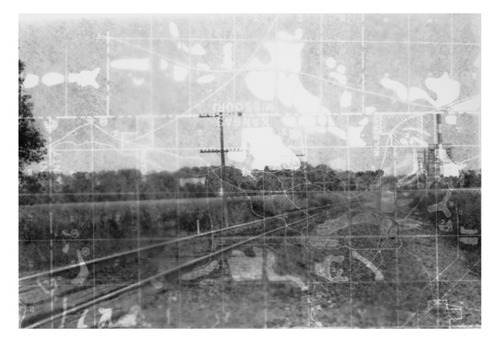
© Erin Dvorak, Daniel Coburn student's work
The department houses two state of the art Digital Imaging Labs featuring forty digital workstations and the latest inkjet printing technology. These labs are furnished with cutting-edge flatbed and drum scanning capabilities. The dedicated and fully equipped lighting studio is spacious and accessible. The traditional darkroom on campus includes a finishing area, two print processing lines, and 20 enlarging stations. The Photo-Media department has an expansive and eclectic collection of digital and analog equipment available for student check out. An Experimental/Alternative Processes lab has recently been added to compliment the wet darkroom and high-end digital environment. My colleague and I are currently designing and implementing an MFA program at the University of Kansas. We will be actively recruiting graduate students in the 2014-2015 academic year.

© Katherine Andrews, Daniel Coburn student's work
The medium of photography has been subject to a technological revolution. As a dedicated educator, it is difficult to stay informed and current. Striking a balance between my own artistic practice and my role as an educator is a difficult one.
You divide your time between the Assistant Professor and your personal artistic research. How do you manage these different paths and related points of view? And how is it possible to share these aspects of artistic practice in teaching and with student careers? Does your own work influence how or what you teach?
DC: I consider myself a portrait photographer and I also have a keen interest in making photogaphic objects. My expertise in these fields influences the way I teach, and of course, my personal biases and values make their way into my curriculum. I can’t pretend to be neutral. I hope that students decide to study with me because of my specialized areas of interest. However, I enjoy, respect, and value all types of photographic work and I encourage my students to take a genuine approach to art making. Great works of art are born when the maker is honest in his or her intentions. I encourage my students to find something they are passionate about.
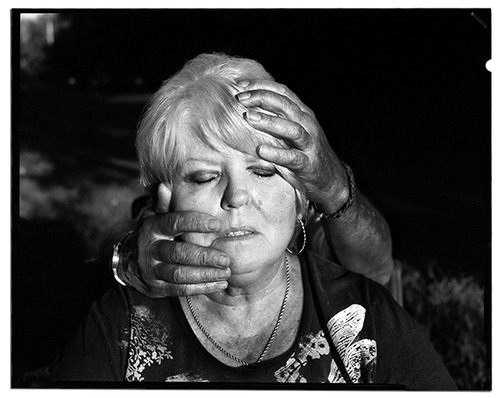
© Daniel Coburn from the series 'The Hereditary Estate'
Balancing personal work and research with teaching is VERY challenging. I tend to embrace all modes of communication with my students (email, texting, social media) to stay in touch. This also means that I can work from my home or studio. I make good use of holidays, intersessions, and Summer breaks to concentrate on my own work and studies. I live and breathe photography.
What about your artistic paths and photographic research? Tell us about your main interests and what projects you have worked on in recent years. What are you working on now? Any ideas for the future?
DC: My work is a critique of the family photo album as it exists to support the notion of an ideal American Dream and Family. Early Eastman-Kodak advertisements provided the archetype; a set of visual instructions on what the proper family photograph should look like. This is why most family photo albums are filled with the same photographic cliche’s. For example, we see images of children opening gifts during the holidays, blowing out birthday candles, the family at the beach, etc. Most family photo albums are interchangeable in this regard.
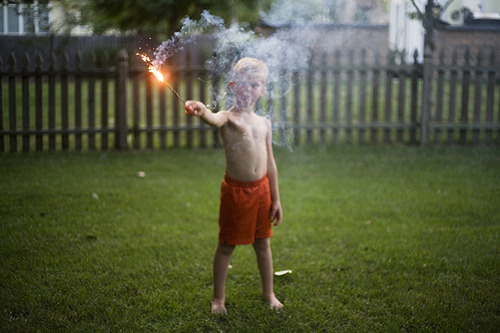
© Daniel Coburn, Jake Plays with Fire, 2012
I began by examining my own family photo album. Where were the images that describe the domestic violence, substance abuse, and suicide that haunt my family history? In my project, Next of Kin, I set out to create images that describe this history. This work serves as a supplement to my own broken family album. This work is ongoing. I am currently working with found vernacular imagery in my project “Domestic Reliquary.” Examples can be seen on my website.
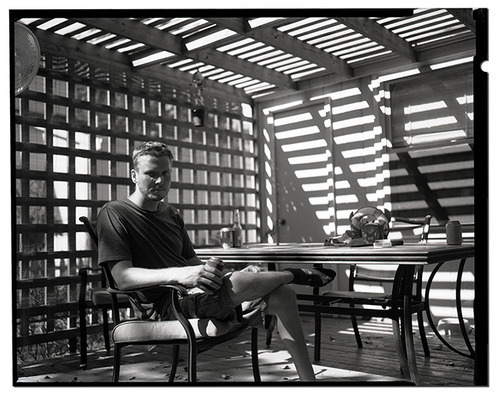
© Daniel Coburn from the series 'The Hereditary Estate'
What are your inspirations in terms of books and photographers that you have loved the most? Do you have a book to recommend to our readers? Which emerging photographer has recently interested you?
DC: Sally Mann’s, Immediate Family played an important role in my development as a young photographer. I frequently revisit the pages of Larry Sultan’s, Picture’s from Home. I am captivated and terrified by Richard Billingham’s monograph Ray’s a Laugh. There are a lot of emerging photographers making great work. Katie Koti and Cynthia Henebry are two of my favorites.

© Max Mikulecky, Daniel Coburn student's work
You took part in many exhibitions. Any particular advice for young photographers aspiring to display and exhibit their work without drowning in the ocean of images in which we daily swim?
DC: My advice is to work hard. Opportunities abound. Be strategic in how you spend your money. There are a lot of organizations and individuals that are profiting from the desperation of young ambitious photographers. But don’t be synical. It is best to engage. Enter all of the juried exhibitions hosted at reputable institutions. Don’t forget to engage with your local arts community. They will help lift you up, and be there to catch you when you fall.
---
LINKS
Daniel Coburn
United States
share this page